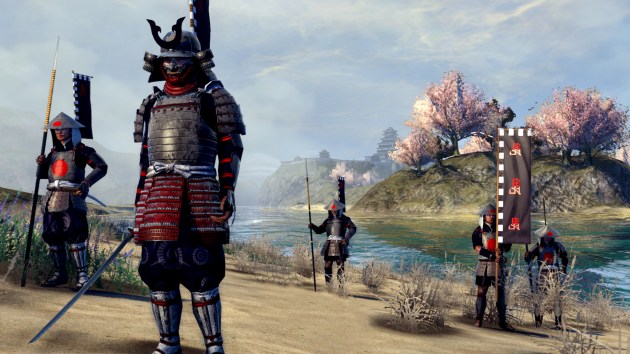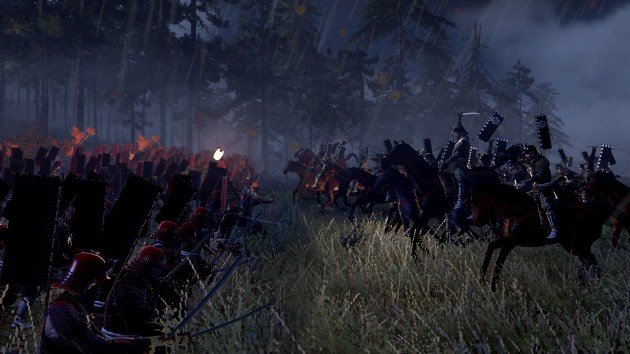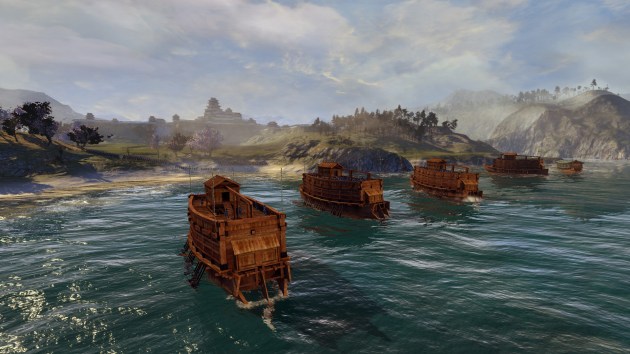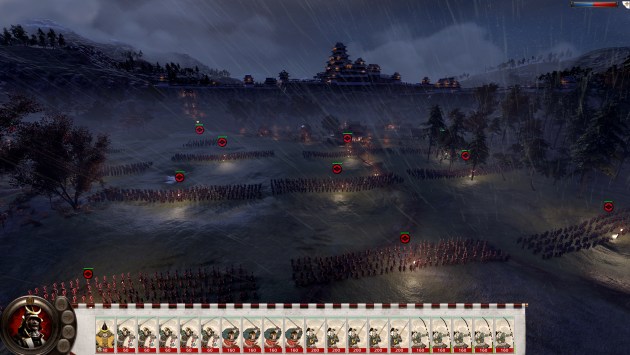http://player.ooyala.com/player.swf?embedCode=VweDhyMTpSeA6dB2DUsiZOqUibWQrZ6U&version=2
So as I mentioned the other day, Sega was in town showing off the goods. Sonic 4 was probably the game with the most, shall we say, mass-market appeal, but I also spent some quality time with Shogun 2: Total War. And by “quality time” I mean like a good 20 minutes. It’s rare that these meet-and-greets last more than, say, 10 minutes, so I’m pretty sure The Creative Assembly‘s James Russell, who’s the game’s lead designer, was about to say, “You can leave now, mate” by the time I actually left.
You’ll recall that I spent much of the winter pretending to be Napoleon Bonaparte, owing entirely to the really, really good Napoleon: Total War. While I’m probably never going to get a chance to sack Cairo or Milan or Vienna in real life, Napoleon brought me the satisfaction of knowing what that might be like.

The goal for Shogun 2, as Russell explained to me, was to simultaneously make the game easier to play for people new to Total War, and to make the game harder to master for Total War veterans. I suppose I’m a veteran, having played enough of Napoleon and Empire (along with a bit Rome, if for no other reason than to command an army of war elephants) to know a thing or two about the game. (During the demo, Russell asked the other folks present if they’d ever played a Total War game before. You’d hear wishy-washy answers like, “Oh, I played it for a little bit here and there.” Lies! You people don’t know what it’s like to try to simultaneously fight the Mameleukes, the Ottoman Turks, the Bedouins, and the British—my God, the British!—with a flimsy, ill-supplied French army!
Yes, I am an armchair general.
As the name implies, Shogun 2: Total War takes places in Japan, specifically during the Edo period, the period right before the country was forced to rapidly modernize (read: westernize) due to various outside pressures. Like all Total War games, you alternate between Risk-style campaign maps—the whole of Japan, with the exception of Hokkaido (where at the time there wasn’t as much going on military-wise)—and full-on army vs. army battles.

Let’s start with the battlefield.
The first thing you notice (see the above video) is the weather effects. To say they look “good” would be a most criminal understatement. It doesn’t rain; it pours. (The smile on my face as I wrote that sentence!) Wind blows leaves clear across the battlefield, and you really get the sense that, well, it probably wasn’t fun to be a soldier back then.
The soldiers are far more detailed than they were in Napoleon. Armor glistens in the sunshine (when the sun bothers shining, that is). Those little flag-things each soldier has attached to their person sways back and forth as they approach the enemy. You almost feel sorry for the guys having to carry the lanterns across the battlefield.

Russell tells me that there’s fewer distinct unit types compared to Napoleon, but that each type can do more things. So while you may have tried to march on Berlin with an army filled with a whole hell of a lot of unit types spread across the line, in Shogun 2 each unit type is far more versatile. Meaning your standard issue infantry unit won’t necessarily merely cannon fodder—they can fight well!
The Creative Assembly has also done a much better job of making you feel like you’re in Japan. There were times in Napoleon and Empire that I could barely tell if I was in Austria or Long Island. That’s not the case anymore. There’s new building types that say nothing but “hey, you’re in Japan!” And for the first time in the series, you actually see ships moored alongside the coast during battles. It’s a nice little touch that now when I go back to play Napoleon I’ll be like, “Hey, where’s the boats?”
The Creative Assembly has tried to streamline (and simultaneously make more interesting) the diplomacy side of things. Not just diplomacy, but the whole part of the game that takes place on the campaign map. Your generals gain the traits you want them to gain, doing away with the old system in Napoleon where your general would pick up random traits as the game went on. It’s sorta like a tech tree: do you want your general to be a great tactician; do you want him to be better at diplomacy; do you want him to have his head around supply lines and whatnot; maybe you want him to excel at siege warfare? That type of thing.

Speaking of diplomacy, how about this: if you’re trying to ally yourself with a neighboring clan, but the clan isn’t too interested, why not offer your daughter’s hand in marriage? Just like in real life back in the day, marriages can be used in the game to help seal alliances. I thought that was a clever addition.
That’s pretty much it, I guess. There’s but so much you can take away from, a 15 or 20 minute demo.
That said, clearly I’m excited for the game.
March cannot come soon enough.